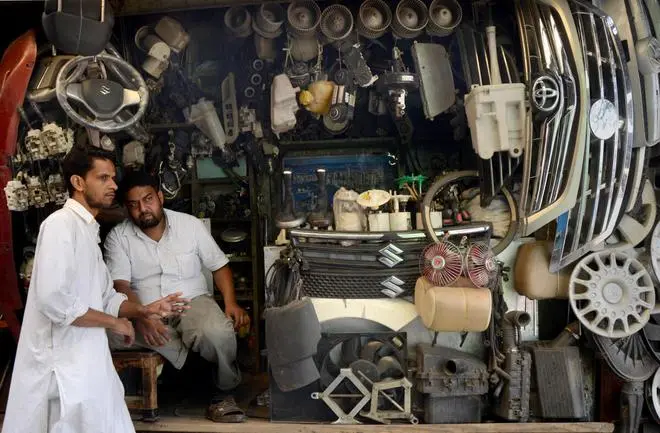The Indian auto component industry is expected to post a 13-15 per cent revenue growth in FY22, supported by domestic original equipment manufacturers (OEMs), replacement, export volumes and pass-through of commodity prices, on the back of the low base of the previous fiscal, says rating agency ICRA.
Domestic OEM demand has remained a mixed bag across segments in FY22, with a slowdown in two-wheelers and semiconductor shortage dragging down overall production volumes. Exports have remained a bright spot in the Indian auto component story, partly aided by the China+1 strategy. This is despite supply chain issues.
“ICRA believes that the growth in FY22 exports would have been even better if not for the semiconductor shortage. While auto ancillaries have a healthy export order book for the next few months, the impact of geopolitical and supply-chain issues on the actual offtake remains monitorable,” said Vinutaa S, Assistant Vice President & Sector Head-Corporate Ratings, ICRA.
Aftermarket segment
In the aftermarket/replacement segment, the improvement in personal mobility, healthy freight movement and deferment of new vehicle purchases due to cost inflation have supported replacement sales in the last few months. A part of the revenue growth has also come from commodity pass-through.
While January-mid-February was relatively dull because of the Omicron wave, demand picked up in the last few weeks. Currently, the liquidity in aftermarkets is comfortable. There were some issues in collections in January 2022, because of Omicron-related absenteeism/quarantining and consequent inability to collect payments, but that has subsequently improved.
Demand for public and private transport as schools and offices reopen, and improvement in the economic activity and freight movement, is likely to aid replacement volumes in the next few months. Cost inflation and semiconductor shortage remain headwinds for the industry.
With the sharp increase in commodity prices in the last three to four quarters, auto ancillaries have not been able to pass through entirely, resulting in a decline in gross margins. Also, the ongoing Ukraine-Russia geopolitical tension could lead to supply shortages and increase commodity prices, especially steel and aluminium.
Further, an increase in crude prices will have a bearing on fuel costs for auto ancillaries. Freight rates have increased by four to five times last year, and are likely to remain at elevated levels in the near term. Supply chain uncertainties, inflation and the need for inventory stocking have led to incremental inventory requirements as well.

Cost inflation and semiconductor shortage remain headwinds for the industry
Overall, the operating margins for auto ancillaries are likely to be impacted in the near term. While the semiconductor situation has been improving in the last one to two months, the Russia-Ukraine conflict could stress the globalised chip value chain. The impact of geopolitical developments on semiconductor supplies remains monitorable.
ICRA’s interaction with large auto component suppliers indicates a cautiously optimistic approach towards capex/investment plans for FY23.
Gradual increase in capex
The rating agency expects auto component suppliers to gradually increase their capex/investment outlay in FY23, though most of these investments will be largely funded by internal accruals. The incremental investments will be primarily towards capability development i.e., new product additions and committed platforms, unlike the investments towards capacity expansion witnessed in the past.
There is some capex happening for the development of advanced technology and EV components as well. The recently-announced PLI scheme will also contribute to accelerating capex.
For FY23, the auto component industry’s revenues are likely to expand by 8-10 per cent supported by the easing of supply-chain issues and commodity inflation in H2 FY23. Over the long term, premiumisation of vehicles and focus on localisation will translate into healthy growth for auto component suppliers.








Comments
Comments have to be in English, and in full sentences. They cannot be abusive or personal. Please abide by our community guidelines for posting your comments.
We have migrated to a new commenting platform. If you are already a registered user of TheHindu Businessline and logged in, you may continue to engage with our articles. If you do not have an account please register and login to post comments. Users can access their older comments by logging into their accounts on Vuukle.